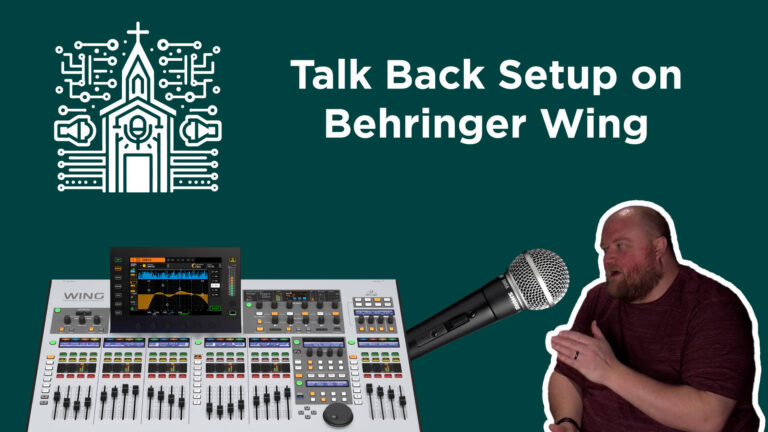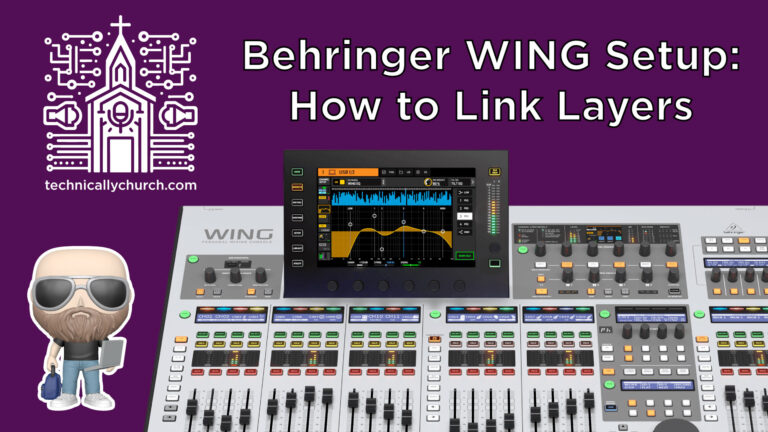Behringer Wing Firmware 3.0 Overview: New Features and Key Updates
The release of Behringer Wing firmware 3.0 has brought a host of exciting features and much-needed updates to the Behringer Wing digital mixing console. Released just a few weeks ago, this firmware aims to enhance the flexibility and control users have over their audio environment. In this article, we’ll dive into some of the most significant new features and changes, providing an expanded view of how they might benefit your workflow. While this isn’t an exhaustive deep dive into every feature, we’ll cover the most notable aspects of firmware 3.0 that stand out, especially for live sound engineers and studio professionals alike.
Firmware 3.0: A Quick Recap
Since the initial release of Firmware 3.0, Behringer has already rolled out three incremental updates—3.0.2, 3.0.3, and 3.0.4—all focused on addressing various bug fixes. As of October 18th, version 3.0.4 is the latest version. The bug fixes in these incremental updates ensure smoother operation, but the significant changes and new features we’re highlighting stem from the major 3.0 release itself.
New Feature 1: Delay on Buses
One of the standout new features in firmware 3.0 is the ability to apply delay on individual buses. This is an especially powerful tool when dealing with complex live sound setups, where time alignment between various audio elements is crucial. In previous versions, users could only apply delay to matrixes and mains. Now, with the ability to delay audio on any bus, it’s possible to fine-tune and correct timing issues in multi-bus configurations.
For example, imagine you’re running multiple speakers in a large venue; now, you can ensure that each bus is time-aligned to avoid phase issues between speaker clusters. This feature is particularly useful in larger live venues where audio from different buses can arrive at different times due to distance.
New Feature 2: Bus-to-Bus Sends Across All Buses
Another major improvement is the ability to send audio from any bus to any other bus, a function that was previously restricted to the first eight buses. This newfound flexibility means users can now create more complex routing setups, sending audio from any bus to any other bus, including buses 9 through 16.
A practical use case might be sending vocal reverb from Bus 16 to Bus 1, where before you were restricted to buses 1–8. This is a huge upgrade for anyone working with in-ear monitors, effects routing, or similar applications, as it allows for more granular control over where and how audio is routed.
New Feature 3: Matrixes Can Now Be Used Like Buses
Before firmware 3.0, matrixes were restricted and couldn’t be used in the same way as buses—there was no ability to assign multiple channels directly to a matrix. Now, matrixes act like buses, meaning you can send all channels, including auxes, directly to a matrix. This effectively gives you 24 buses at your disposal, dramatically increasing the mixing console’s routing capacity.
For those working in live sound, this is a game changer. You now have more buses available for tasks like grouping outputs, creating complex monitor mixes, or running additional effects. This new flexibility allows engineers to route audio in more sophisticated ways without running out of bus options.
New Feature 4: Talkback Channel to Matrix
The talkback channel has also received a major upgrade. With firmware 3.0, it is now possible to route talkback to a matrix, which was not possible before. This enhancement adds a new level of control for audio engineers, especially in environments like broadcasting or live performances where communication with different audio zones is essential. Whether you’re sending talkback to a monitor mix, a front-of-house system, or a specific group of performers, this feature simplifies communication across multiple outputs.
New Feature 5: Custom Control Button Enhancements
The custom control buttons on the Behringer Wing have been expanded in firmware 3.0, making it easier for engineers to customize their workflow. One notable addition is the ability to assign a channel solo to a user-defined button. This allows you to solo a specific channel with the press of a button, regardless of which channel view you’re currently in.
Moreover, there are enhancements to the fader set options, including a new -10 dB option. This feature allows users to quickly move multiple channels to a set fader level with just the press of a button. For example, if you’re making adjustments on-the-fly, holding down the assigned button while selecting channels can drop multiple faders to -10 dB simultaneously. This feature also works for Unity (0 dB) and Negative Infinity settings, allowing for quick and efficient adjustments to large channel groups.
Changes to Existing Features
While there are plenty of exciting new features, it’s also important to note some key changes that might catch engineers off guard if they’re used to previous versions of the firmware:
- Talkback Window Changes: The interface for the Talkback feature has been revamped. Now, routing the talkback microphone is done through the router window rather than directly from the Talkback view window. This change requires users to re-learn where these settings are located but ultimately offers a more streamlined way to manage routing.
- Bus Loop Warnings: With the ability to send buses to other buses, there’s now the potential to accidentally create audio loops. To address this, Behringer has added a warning system that alerts users when they’re about to create a feedback loop by sending a bus to itself. This safeguard helps prevent unintended audio loops that could disrupt a live performance or recording session.
Final Thoughts
The Behringer Wing firmware 3.0 brings a wealth of enhancements and new features that improve flexibility, control, and overall functionality. Whether you’re working in live sound or the studio, these updates allow you to manage your audio environment with greater precision and customization than ever before. From bus delays and bus-to-bus sends to treating matrixes like buses, this update opens up a world of possibilities for sound engineers looking to push the boundaries of their mixing setup.
For a deeper dive into each feature or to see them in action, check out the video series detailing these updates. The firmware changes mentioned here represent just the beginning of what’s possible with the Behringer Wing 3.0 firmware.






